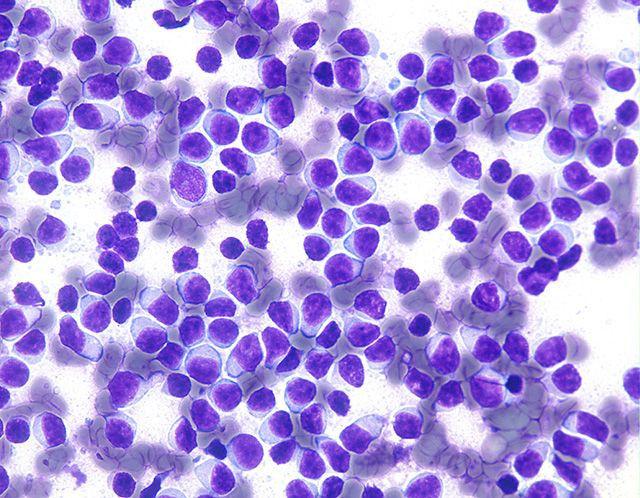World Lymphoma Awareness Day 2016: Quick Facts About The Cancer Of Lymphatic System

World Lymphoma Awareness Day, held on Sept. 15 every year, is a day dedicated to raising awareness about lymphoma, which is a form of cancer that affects the infection-fighting cells of the immune system called lymphocytes. There are two main types of lymphoma — Hodgkin's lymphoma and non-Hodgkin's lymphoma.
The cells affected by the lymphoma are present in the lymph nodes, spleen, thymus, bone marrow and other parts of the body. Lymphocytes grow out of control when you are suffering from lymphoma. Lymphoma can be treated and in some cases it might be cured. While statistics from the U.S. National Cancer Institute estimate that there are nearly 20 cases of non-Hodgkin's lymphoma for every 100,000 people in the American population, Hodgkin's lymphoma is relatively rare with around three cases for every 100,000 people.
Who Is At Risk:
People in their 60s or older.
Male
People with weak immune system from HIV/AIDS, an organ transplant, or because you were born with an autoimmune disease.
People with an autoimmune disease such as rheumatoid arthritis, Sjögren's syndrome, lupus or celiac disease.
Individuals who have been infected with a virus such as Epstein-Barr, hepatitis C, human T-cell leukemia/lymphoma (HTLV-1), or human herpesvirus 8 (HHV8)
People closely related to those having lymphoma.
Those who have been treated for Hodgkin or non-Hodgkin lymphoma in the past.
People who are overweight.
Symptoms:
Swollen glands (lymph nodes), often in the neck, armpit or groin
Cough
Shortness of breath
Fever
Night sweats
Stomach pain
Fatigue
Weight loss
Itching
Chills
Cramping and bloating of the abdomen
Loss of appetite
Fast Facts About Lymphoma:
- Lymphomas make up 3 to 4 percent of all cancers, making them as a group the seventh most common form of cancer.
- Treatment for lymphoma patients may involve chemotherapy, radiation therapy, targeted therapy, surgery, plasmapheresis and watchful waiting or disease monitoring prior to change in treatment.
- Lymphomas and leukemias are a part of the broader group of tumors of the hematopoietic and lymphoid tissues.
- The five-year survival rate in the U.S. for all Hodgkin lymphoma subtypes is 85 percent, while that for non-Hodgkin lymphomas is 69 percent.
- The most common type of aggressive lymphoma is diffuse large B-cell lymphoma (DLBC).



























